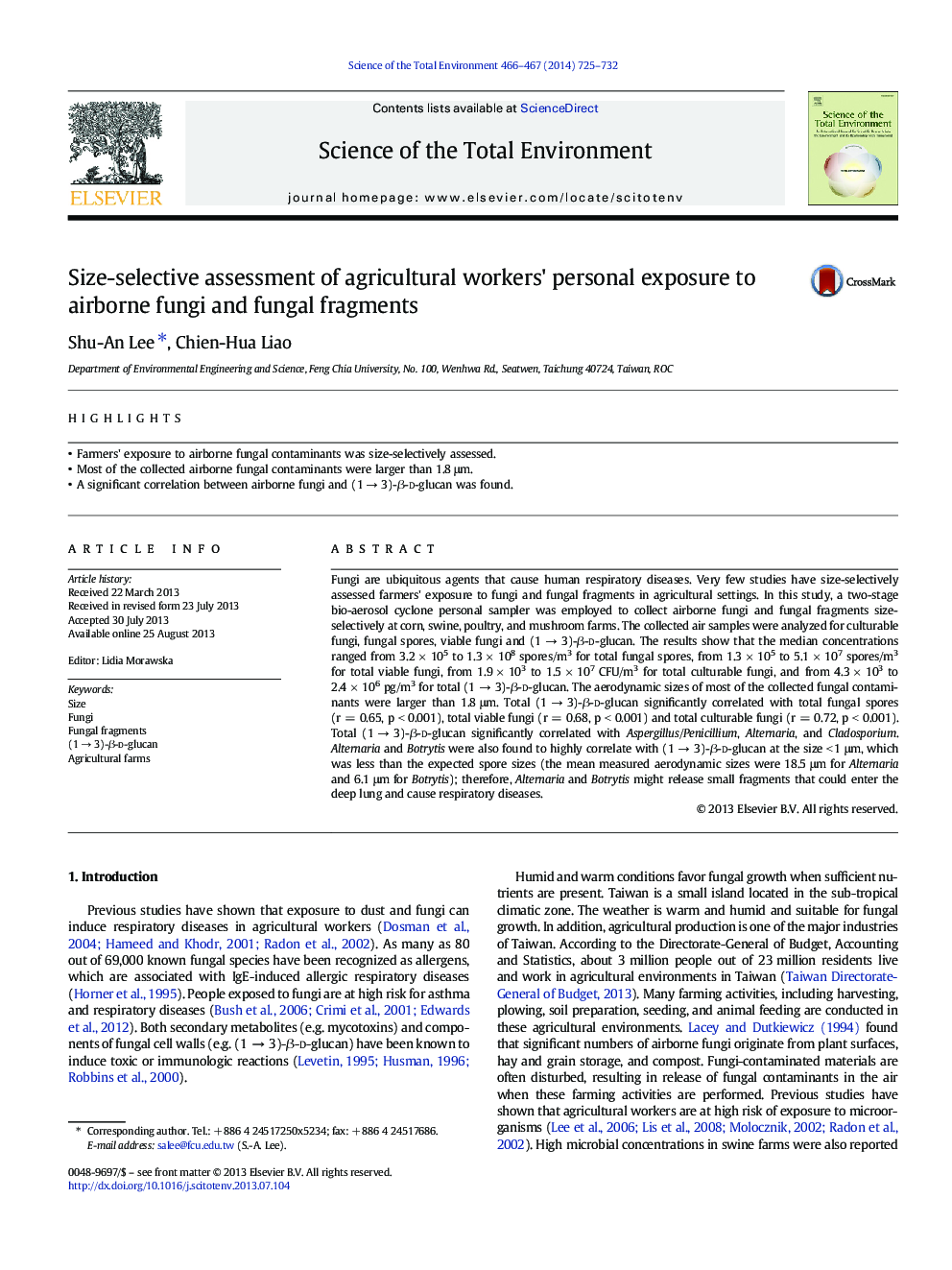| Article ID | Journal | Published Year | Pages | File Type |
|---|---|---|---|---|
| 6332353 | Science of The Total Environment | 2014 | 8 Pages |
Abstract
Fungi are ubiquitous agents that cause human respiratory diseases. Very few studies have size-selectively assessed farmers' exposure to fungi and fungal fragments in agricultural settings. In this study, a two-stage bio-aerosol cyclone personal sampler was employed to collect airborne fungi and fungal fragments size-selectively at corn, swine, poultry, and mushroom farms. The collected air samples were analyzed for culturable fungi, fungal spores, viable fungi and (1 â 3)-β-d-glucan. The results show that the median concentrations ranged from 3.2 Ã 105 to 1.3 Ã 108 spores/m3 for total fungal spores, from 1.3 Ã 105 to 5.1 Ã 107 spores/m3 for total viable fungi, from 1.9 Ã 103 to 1.5 Ã 107 CFU/m3 for total culturable fungi, and from 4.3 Ã 103 to 2.4 Ã 106 pg/m3 for total (1 â 3)-β-d-glucan. The aerodynamic sizes of most of the collected fungal contaminants were larger than 1.8 μm. Total (1 â 3)-β-d-glucan significantly correlated with total fungal spores (r = 0.65, p < 0.001), total viable fungi (r = 0.68, p < 0.001) and total culturable fungi (r = 0.72, p < 0.001). Total (1 â 3)-β-d-glucan significantly correlated with Aspergillus/Penicillium, Alternaria, and Cladosporium. Alternaria and Botrytis were also found to highly correlate with (1 â 3)-β-d-glucan at the size < 1 μm, which was less than the expected spore sizes (the mean measured aerodynamic sizes were 18.5 μm for Alternaria and 6.1 μm for Botrytis); therefore, Alternaria and Botrytis might release small fragments that could enter the deep lung and cause respiratory diseases.
Keywords
Related Topics
Life Sciences
Environmental Science
Environmental Chemistry
Authors
Shu-An Lee, Chien-Hua Liao,
